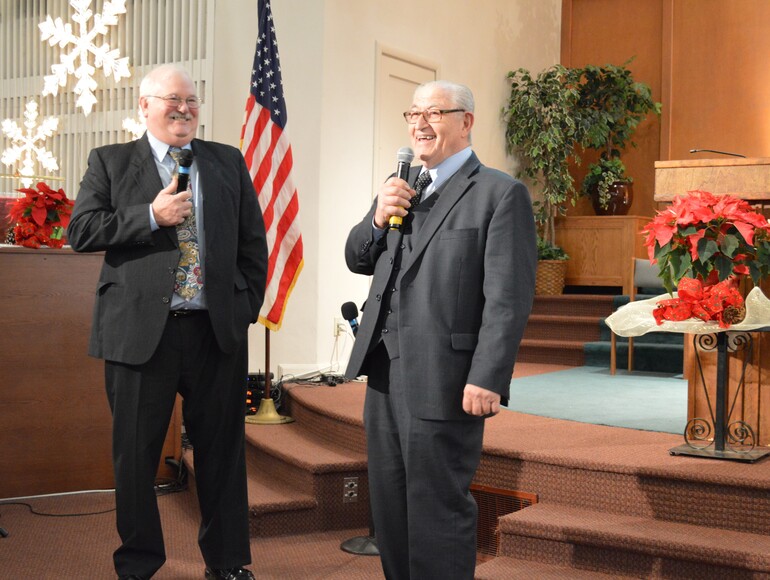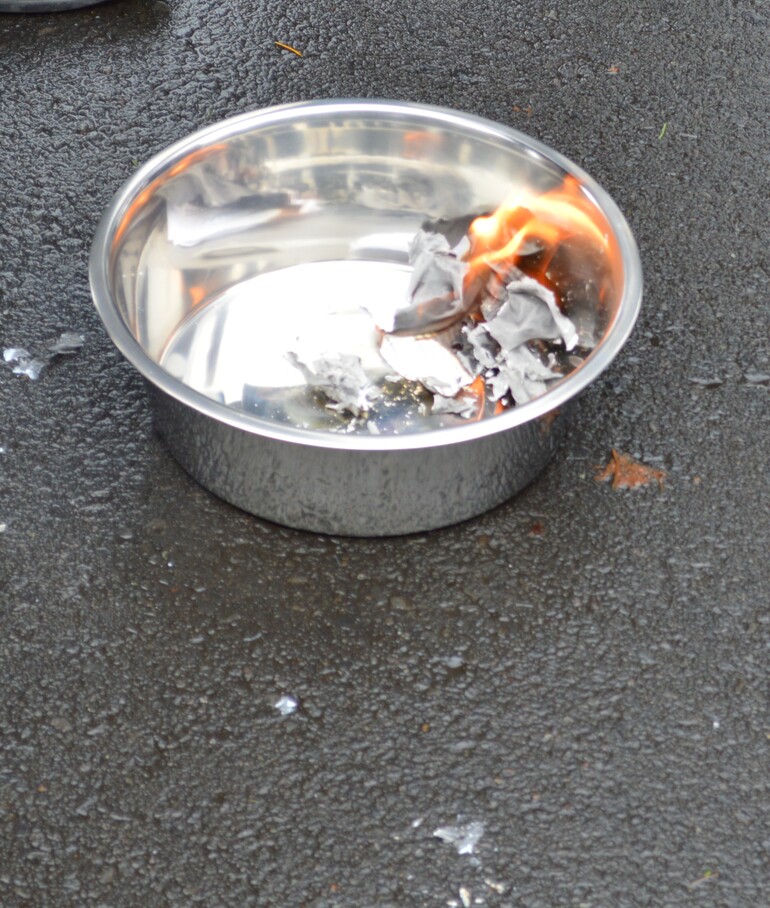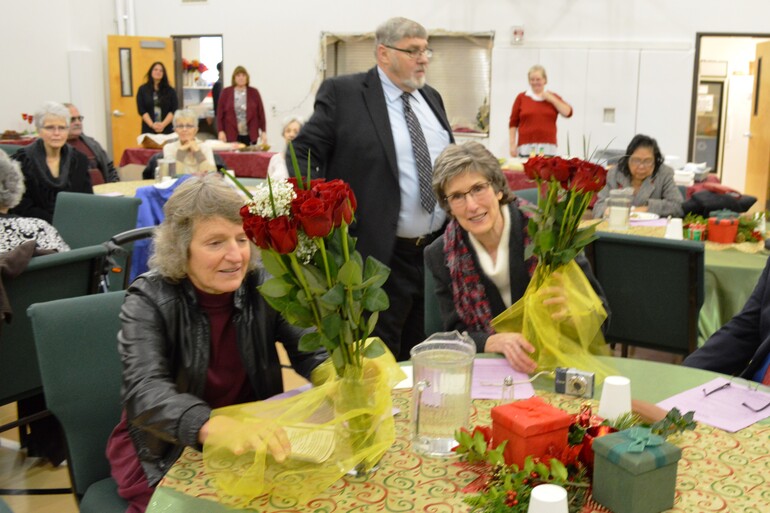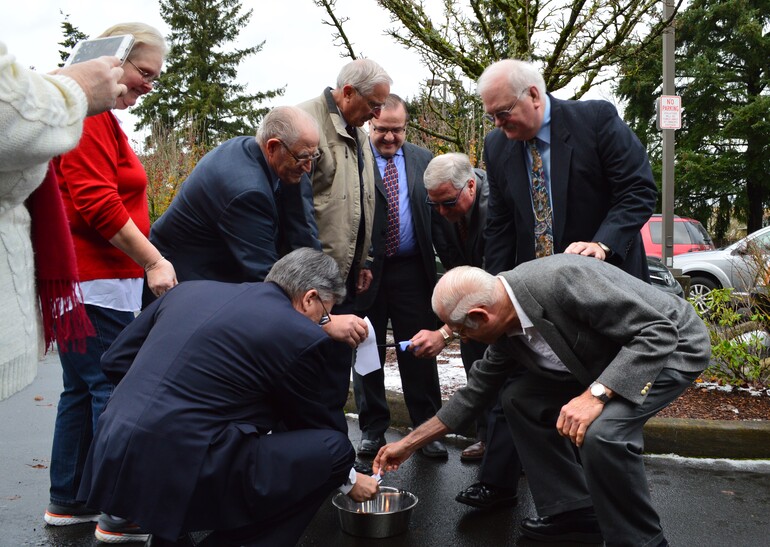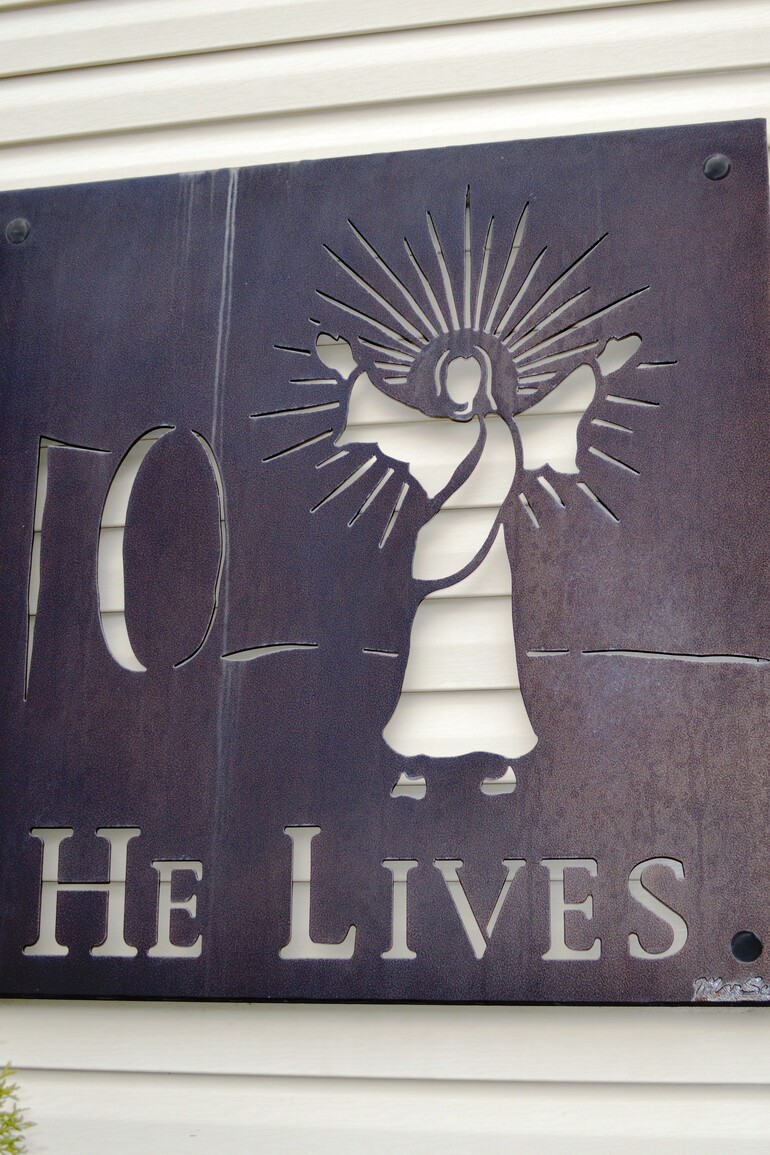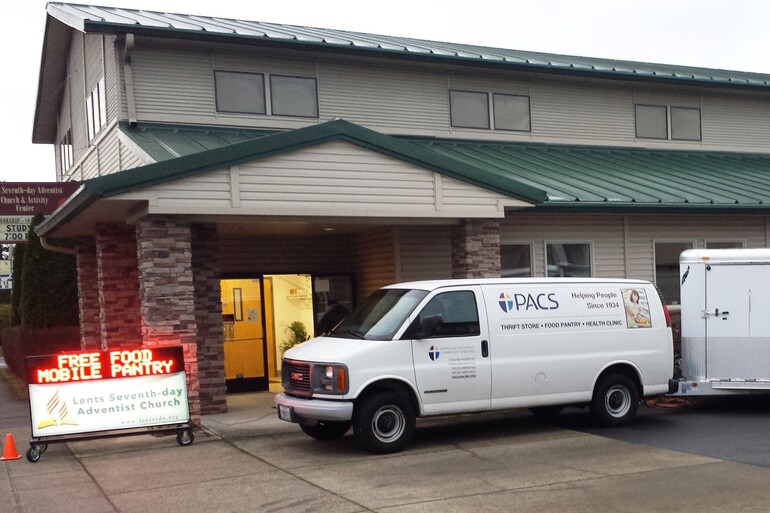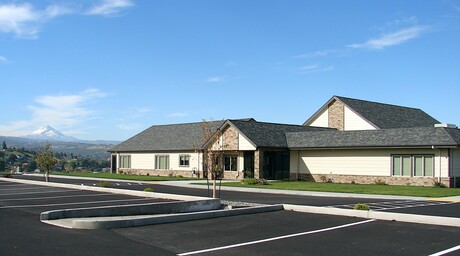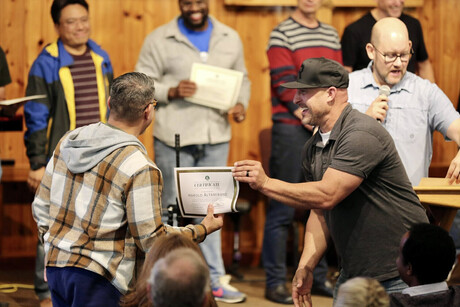Lents Church members, former pastors and official guests spent time Dec. 10, 2016, recalling the process involved in building their Lents Activity Center (LAC) in Portland, Ore. The building loan was paid off five years early.
David Freedman, Oregon Conference vice president of finance, told those gathered, “This was not typical of such loans.” Dan Linrud, Oregon Conference president, and Gary Parks, Oregon Conference trust services associate director, took part in the service and observed the mortgage-burning ceremony.
“Nobody on the church board started with the idea of building a big building,” says longtime Lents member Vern Henry. “Our limited vision was to expand the parking lot, using the grassy lot we owned, but the city of Portland denied us a permit to do this.” Church members recall the city wanted to discourage the use of cars.
The church board began exploring the possibility of replacing their 1,700-square-foot prefab three-bedroom home serving as a fellowship hall with a 5,700-square-foot building. Warren Dick, a retired conference worker, had experience with church building projects and financial matters dealing with these endeavors. He informed the Lents Neighborhood Association of the church’s desire for a larger building to accommodate neighborhood activities.
The neighborhood association wanted a permanent place to have their meetings. They agreed to help the church with the appeal and permit process. With joint cooperation, the church gained approval for their building proposal, including the expanded parking lot.
Members felt the Lord telling them, “Tear down the old building and build bigger — that the church would die if it didn’t have a place for people to meet.” As the church was striving to meet their monthly budget, taking on a building loan seemed irresponsible to some. Pledges were solicited that came close to meeting the amount needed for monthly payments. The church decided to proceed. Dick became the building chairman and point man for information.
The 40-year-old fellowship hall was purposely burned down in June 2001 by Portland Fire and Rescue as a fire training exercise. The onlookers watched the flames go high. The Baptist church next door invited the Lents Church to use their fellowship hall for social events during the transition.
Before the building could be built the city had another demand: The building had to have windows because the city did not want it to look like a warehouse. The church didn’t want windows because they wanted the youth to be able to use the building to play basketball and volleyball. Dick pursued solutions to this dilemma.
A steel fabrication company agreed to make window-sized, laser-cut metal signs to promote features of our message along the two street-facing walls. For example, the words, “Spiritual, Mental, Physical and Social” were written out with graphics on one wall. Silhouette pictures with the wording “He Came, He Died, and He Lives” were placed on another wall. Faux windows were also fabricated for the walls higher up. Portland accepted this compromise.
Construction began in April 2002, and the building was dedicated in September 2003. The LAC is used for Bible and health evangelism efforts. It is used for social get-togethers and, unlike the old fellowship hall, accommodates the whole church membership at one time. The Lents Neighborhood Association uses the space for their meetings.
The LAC’s debt was a financial burden for 13 years. The church was not meeting their payments in 2004. One church member’s estate planning helped the church with two LAC payments. Pastor Paul Cole wrote in August 2005 the church was paying more interest than principal each month. He suggested ways to contribute to this project.
With greater attendance, the church met its obligations. One church member gave a sizable one-time donation. Church congregations of other denominations have rented and are renting our church and appreciate the LAC. Church members gave both monetarily and of their time with fundraising activities. Warren and Becky Dick had the LAC in their estate plan, which recently paid the balance of the outstanding loan.
The Lord deserves credit for moving the project through the challenges that threatened its accomplishment. As a result, our members' faith increased. We hope this story can be an inspiration for other churches faced with building projects.





